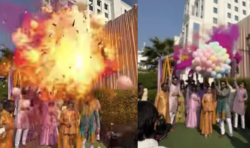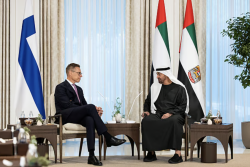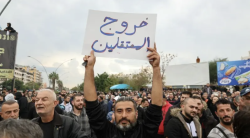How are 'kamikaze' drones being used by Russia and Ukraine?
- 2022-10-17 17:40:44


 Pierre Rayer: Art, Science, and Happiness: The Universal Mission of Transmission to Future Generations through Patronage at the Louvre Abu Dhabi
Pierre Rayer: Art, Science, and Happiness: The Universal Mission of Transmission to Future Generations through Patronage at the Louvre Abu Dhabi Ahly crowned Super champions after dramatic extra-time win over Modern Future FC
Ahly crowned Super champions after dramatic extra-time win over Modern Future FC Yemeni Honey..A Development Wealth Threatened By Conflict And Climate Change
Yemeni Honey..A Development Wealth Threatened By Conflict And Climate Change California wildfires: Millions warned of possible power cut
California wildfires: Millions warned of possible power cut Central African rebels launch attacks near capital
Central African rebels launch attacks near capital Western Powers Tighten Front Against Political Islam: Trump’s Brotherhood Terror Designation Joins Europe’s Hardline “Protection Doctrine”
Western Powers Tighten Front Against Political Islam: Trump’s Brotherhood Terror Designation Joins Europe’s Hardline “Protection Doctrine” Delhi Couple Injured After Hydrogen Balloons Catch Fire During Haldi Entry Nation
Delhi Couple Injured After Hydrogen Balloons Catch Fire During Haldi Entry Nation UAE ,Finland Presidents Discuss Bilateral Cooperation in Abu Dhabi
UAE ,Finland Presidents Discuss Bilateral Cooperation in Abu Dhabi Syrian Alawites protest, demanding federalism and release of Assad-era officers
Syrian Alawites protest, demanding federalism and release of Assad-era officers IOM Reports Surge in Internal Displacement in Yemen
IOM Reports Surge in Internal Displacement in Yemen
